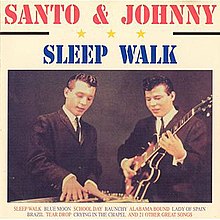Two articles from California caught my attention today. One was about the four-year drought crisis, about which not much in the way of solutions has been implemented yet, and a solution so successful it almost obscures the fact that the only problem solved was making one couple insanely rich.
My own, and probably your, experience of working with people in groups at even the lowest levels like PTAs, HOAs, and staff meetings is that getting a problem to be recognized and solved expeditiously and efficiently seems impossible. Imagine now how all the many governmental, citizen and business bodies would have to work together to take on the drought situation in that populous state which provides an inordinate amount of the nation's food (and wine!). Their interests, given human nature, will always collide -- even though they're all in the same boat -- and powerful individuals' interests in each group far outweigh those of the general population.

Conservation is necessary, but most want the other guy to do the conserving. And in areas like San Diego, there's not enough rainfall or groundwater even to start with, much less conserve. Any slightly increased costs due to conservation or alternative solutions to the usual draining the rivers and reservoirs can cause backlash. Up the coast, Santa Barbara County built a desalinization plant in response to a similar drought period in the 1980s, but promptly closed it when rains and snowmelt refilled the reservoir; that water is of course less expensive (the infrastructure and energy inputs to turn sea water into drinking water are very large). San Diego will open their new plant in 2016 and the closed one is being looked at for reuse now, but it's four years into the current drought, remaining conventional supply is low, and the plants will only provide drinking water to some homes in those two cities. And California uses 80% of its water for agriculture; that's a different animal than potable water for personal comsumption.
Are California's radical right-wing Congressmen, mostly from either the agricultural heartland owned by millionaires and corporations or from wealthy areas such as Orange County, working on this devastating problem? No, you know from their public fulminations that they're fixated on Mrs. Clinton's e-mails and spending years investigating the Benghazi attack, all the while forgetting that G.W. Bush and R. Cheney slipped their e-mails through private accounts, and that they had cut $500 million from embassy security earlier in their ongoing efforts to gut the government. But even overlooking their amusingly simple-minded hypocrisy, they really should be paying attention to the state of their state.
Now, contrast this lack of focus and organization to the empire of Rick Warren, leader of the Saddleback Church in Orange County. He and his wife will be celebrating the 35-year anniversary of that empire's creation with 50,000 attendees at Angel Stadium right about now. They developed a long-range plan for their own brand of church after graduating divinity school in Texas, seeing an excellent model in Robert Schuller's Crystal Cathedral, because they wanted no parts of the usual first assignment to some poor, rural church circuit by their Baptist denomination. While in Orange County to study Schuller's organization, they carefully studied the local demographics -- wealthy yuppies who had lost interest in conventional religion -- and picked their sweet spot, where the 405 and 5 freeways merge.
After beginning with a group meeting in their condo and then twelve years of holding services in two high schools, and never giving up on their plan while polishing that charisma and sincerity, the Warrens have ended up with 27,000 followers in ten Southern California campuses along with 7500 more faithful meeting in homes. Even a solid plan without the talent is not enough, of course; Warren's book The Purpose Driven Life shows he surely knows what people want to hear, in that it is the top nonfiction hardback with 40 million copies sold, second in translations only to the Bible.
Warren, Inc.'s success, assets, fame and wealth are a result of their solving a marketing problem for Protestant Christian religion. That's all. Sure, they have people do good deeds, but that's to weave a mantle of good publicity which is created by the labor of volunteers, so it is cheap and keeps the nonprofit status unassailable.
So out on the west coast we have one serious problem with nationwide impact and in desperate need of solutions on one hand, and a small problem of no real consequence, on the other, solved neatly and successfully. A funny thing about human society is that one person, or family, driven by purpose or greed (or both), can move mountains, but the talents of many people together usually can't even get to the mountain. As someone noted recently, the former USSR and Sam Walton's WalMart are both centrally planned command economies, but one got results and the other did not (but the workers, peasants and middle class lose either way). We rightly fear dictators, CEOs and kings. It's just that putting all the king's men in charge doesn't inspire much confidence either.











